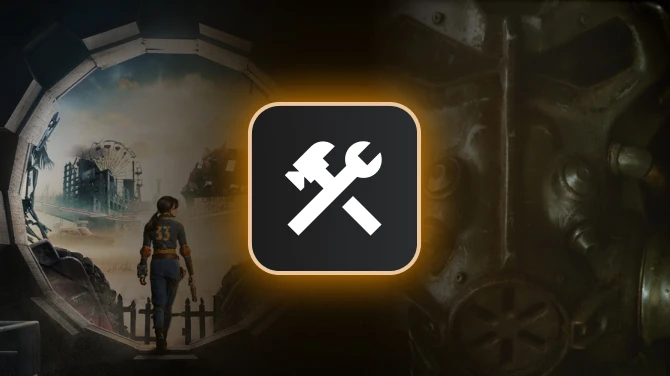Please don't follow this guide anymore, it's severely outdated!
Check out the Octagon Textures Batch Tool
If you're like me, you're probably using many texture mods in your Fallout 4 game. But, a lot of these texture mods are using loose files, which are very inefficient while playing the game. Some common symptoms of using such textures are decreased performance, increased loading times, stuttering, clipping/falling through terrain, or the textures may completely fail to load. This is because Fallout 4 archives ALL of its textures and meshes, and almost everything else, in the new BSA format, BA2. You can find much more information on this HERE.
The game can can utilize these archives much more efficiently than it can with loose files, and I'm going to show you how you can utilize them as well.
The only thing we need is Bethesda's new Archive tool, which is included in a toolkit with the Creation Kit. If you don't already have it, you can grab it HERE. (You'll need to login with a Bethesda.net account)
After you've installed the Creation Kit, you'll have a new folder in your Fallout 4 game folder called "Tools". And, inside the "Tools" folder is another folder named "Archive2". This is the tool that we will be using.
Now, there's two ways of doing this, depending on what Mod Manager you're using:
If you're using Nexus Mod Manager, you probably have all of your texture mods already installed in the "Textures" folder in your game's "Data" folder. This means that you'll have to create 1 large archive of all of your textures (* Note about this later). If any of your texture mods are updated, you will have to re-package the entire archive again.
If you're using Mod Organizer, you most likely have each of your texture mods in their own separate folders. This means that you'll have to create multiple archives for each mod. When any of those texture mods are updated, you'll only have to re-package the updated mod.
Either way, both options are totally fine. NMM users CAN create individual archives if they want, and MO users CAN create 1 large conglomerate if they want (* Again, Note later).
So, let's start. Decide on which texture mod you want to create an archive for. Remember, it must be using "loose files", meaning it needs to have a "textures" folder. For this tutorial, I'll be using tapioks' Ojo Bueno Port-a-Diner Machine (The 4K Full variant).
Launch the "Archive2.exe" application. We're going to create a new archive, so go to "File - New". A new window will pop up with some options. The only thing we need to change here are the Archive Settings Format. Set the Format to "DDS", and hit OK.
NOTE: This is where that note comes in. The game will not load BA2 archives that are over ~2GB in size. So, if you choose to archive 1 large texture compilation, make sure the final size is less than 2GB. By setting the "Maximum Archive Size" to 2000 MB, the application will create multiple sequential archives if we're over.

Now, we need to add our textures to the archive. This is done by clicking "Archive - Add Folder". Browse to either you game's "Data\Textures" folder to archive the whole thing, OR your individual mod's "Textures" folder to archive only that mod's textures. You can either highlight the "Textures" folder, and click the "Select Folder" button, or hit the button after opening the folder.

Once you've selected your folder, the application will scan for files, and begin adding them to the archive. This should be a quick process, depending on the size of your "Textures" folder. Once it's done, make sure every line begins with "Textures\". If not, you've selected the wrong folder, and will have to start over by creating a new archive.

Time to save our newly created archive. Click "File - Save", and a new window will appear, asking where to save your archive, and what you want to name it. You can name the archive anything you want, but I recommend you don't get fancy. Keep it something that you will remember. As for where to save it, NMM users should save to their game's "Data" folder, and MO users can save back into the original mod's folder.

Now, we've got a compressed BA2 archive of our texture mod! You'll notice that the file size of our new archive is actually smaller than the total size of the loose files. This is another benefit of archiving our textures in BA2. Be sure to remove your "Textures" from your game's "Data" folder, or the Mod Organizer mod folder. (Don't delete them, in case the texture mod gets updated) The game might load those loose files instead, if they're still there.

The last thing we need to do is to tell the game to load our new archive. It doesn't know that it exists yet. There are two ways to do this. The easiest method is by editing our "Fallout4.ini" file. By default, this is located in your "Documents\My Games\Fallout4" folder.
Find the line "sResourceIndexFileList" under the "[Archive]" section. Remember what you named the archive you created? We're going to add it to the list of archives for the game to load here. Each archive is separated by a comma (,). So to add my new Port-A-Diner archive, I'll add a comma to the last entry in the list, and paste in the name of my archive, "Ojo Port a Diner.ba2". You will do the same for all archives you create.

The other way to get the game to load our archive is slightly more advanced, and should generally only be used by mod authors when sharing their mods. All you have to do is create a "dummy" .esp plugin in the Creation Kit, simply by launching it, and saving a new plugin. (Or, if your mod already has a plugin, use that) Name the plugin whatever you want, and name your archive with the same name, plus " - Textures" appended to the end. So, an "ExamplePlugin.esp" will have a texture archive named "ExamplePlugin - Textures.bsa". Our texture archive will load automatically with the plugin.
Mod users can also use this naming convention for mods that DO contain an .esp plugin, but don't already have its textures archived in .bsa.
And, that's it! Load up your game, and see your textures loaded in the game, with increased performance, and decreased load times!









28 comments
Need some help! I'm using NMM and just archived my whole Texture folder into ba2 files with the Archive tool, added them to the .ini and followed all other directions to the T, and now in game I have purple/hot pink textures EVERYWHERE! Did I miss something? I can revert everything since I made a backup of the Texture folder and everything returns to normal but the load times and stuttering is atrocious with how many mods I have installed.
Check out the Octagon Textures Batch Tool
Let's say I have 20 gigs of textures and 10 gigs of meshes. Archive2 would then creat 10 (2 gig) sequential texture Ba2 and 5 sequential (2 gig) Main Ba2.
So my question is would I need a dummy plugin for each separate Ba2, 15 in total? That would be crushing on my load order.
Could I then merge those 15 dummy plugins into 1?
Thanks for the well written guide.
Johnny
>Look at the data folder as a guideline, I'm not certain but im thinking it should be possible if you just follow the format of some other files.
FO4 has 9 texture ba2s, xx - textures1 -> xx - textures9, i assume using this format itll all link to 1 esp like the base game.
I've used this to create several archives for Fo76 and it's perfect, thanks again! :)
I have altered the textures from a other mod, Cait as half mutant. I have tried many different things, so I will make a list:
- First I extracted the files with BAE
- Altered what I wanted i PS
- Saved the files as dds files, using the Nvidia plugin for PS (dx5)
- Followed your guide to the letter
- Poked around in how the bsgm files were set up and made sure it was matched 110%
- Tried DLing an IntelTexture plugin for PS, to save it as dx10
- Tried a bunch of other things too.
The funny thing is, that the alterations are visible in BodySlide and Outfit Studio, but not ingame. Have any suggestions as to what it might be, that I am doing wrong?
Where I say: The easiest method is by editing our "Fallout4.ini" file. By default, this is located in your "Documents\My Games\Fallout4" folder.
If you're using Mod Organizer, this file is not used. Mod Organizer creates its own game .inis in its profiles directory.
You can edit these by clicking the icon in the toolbar that looks like puzzle pieces, and going to "INI Editor".
For some reason, using the method: add *.ba2 files into Fallout.ini via "sResourceIndexFileList=" didn't work for me and textures just don't load.
I know, there could be a million different reasons as to why. I've got like 13 GB of loose textures xD
So, I decided to try the 'dummy.esp' method. And I have 2 questions regarding that.
1) Some textures have the *.tga extension which apparently is not supported by Archive2.exe; how do I go about those? Can they only be loaded as loose files? Or should I use a different compression tool other than Archive2?
2) Since my archived textures come in more than a single part, how do I go about naming part2 and part3? Do I name them like, "ExamplePlugin - Textures01.b2a" and "ExamplePlugin - Textures02.b2a" and so forth?
Once again, thank you for one of the few the comprehensible guides for those who know almost nothing about modding.
Edit: Changed my first question to a more relevant one, in case someone was seeing this :)
The easiest method is by editing our "Fallout4.ini" file. By default, this is located in your "Documents\My Games\Fallout4" folder.
If you're using Mod Organizer, this file is not used. Mod Organizer creates its own game .inis in its profiles directory.
You can edit these by clicking the icon in the toolbar that looks like puzzle pieces, and going to "INI Editor".
For your other more specific questions:
1. The game doesn't load .tga files at all, which is why Archive2 doesn't handle them. They're unnecessary extras that the Creation Kit creates, and some mod authors decide to include in their mods. You can just ignore them, leave them as loose files, or delete them if you think they take up too much space.
2. Archive tool should automatically name your texture parts sequentially. If it doesn't, you've got it already. (PluginName - Textures01.ba2, PluginName - Textures02.ba2, etc...) This naming convention is only required when using the dummy.esp method, though.
This guide might be slightly outdated, especially since Vortex has officially replaced Nexus Mod Manager, as well as most texture mods have now realized to do this stuff, but I'm glad that people still find it helpful. I haven't gotten a chance to try Vortex yet, but hopefully I can soon, and maybe revise my tutorials, and maybe place them somewhere more easy to find. XD
If you go with the dummy.esp route, I know Mod Organizer is capable of telling you what archives are also loaded with the plugin when you hover over it in the plugin list, also indicated by a golden treasure chest icon. Make sure all your archives are listed there, and you'll be fine.